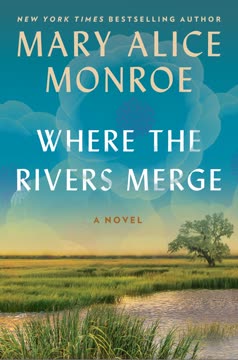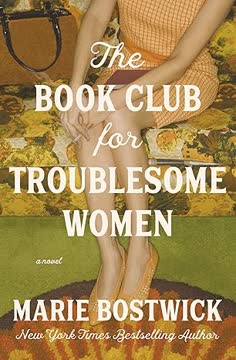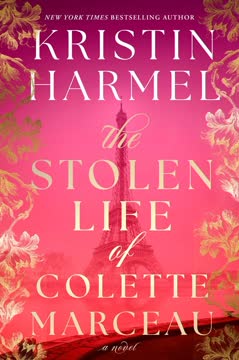Plot Summary
Roots and Rivers Return
Eliza Rivers, at eighty-eight, wakes in Charleston on her birthday, haunted by dreams of her childhood at Mayfield, the family's ancestral plantation. Her day is filled with family tensions over her decision to place Mayfield's land in a conservation easement, protecting it from development but angering her son Arthur, who covets the land's value. Eliza's granddaughter Savannah and grandniece Norah, each representing a new generation, are drawn into the family's orbit. The narrative's present-day frame is set: Eliza, facing her mortality and the threat to her life's work, gathers the young women to Mayfield, determined to pass on the stories and the stewardship of the land before it's too late.
The Hollow's Secret Bond
In 1908, young Eliza flees her family's Charleston party and the violence of a duck hunt, finding refuge in the hollow of a great live oak. There, she meets Covey, the Black daughter of Wilton, Mayfield's caretaker. Their friendship, born of shared adventure and danger, transcends the racial and social boundaries of the era. Together, they explore the woods, swim in the river, and form a secret club with Tripp, Eliza's childhood friend and future husband. The hollow becomes their sanctuary, a symbol of innocence and the possibility of connection across divides.
Family, Land, and Legacy
Eliza's family is a microcosm of Southern aristocracy: her mother Sloane, obsessed with social standing; her father Rawlins, devoted to the land; her brothers Heyward (the golden heir) and Lesesne (the overlooked, troubled son). The Rivers' legacy is both a blessing and a burden, with Mayfield representing continuity, duty, and the pain of primogeniture. The family's relationships are shaped by expectations, disappointments, and the ever-present question of who will inherit and care for the land.
Blood Oaths and Boundaries
Eliza, Covey, and Tripp seal their friendship with a blood oath in the hollow, promising loyalty "on pain of death." Yet, the realities of race and class intrude: Covey is allowed to join the family's schoolroom only after a struggle, and even then, she and Eliza are relegated to cleaning duties. The girls' bond is tested by the world's prejudices, but their shared love of learning, nature, and storytelling sustains them. The hollow remains their secret place, a refuge from the adult world's rules.
Mayfield's Divided Heart
As the children grow, Mayfield becomes both a paradise and a site of division. Eliza's passion for horses and the land is matched by Covey's for plants and art. The arrival of Tripp and the golden neighbor Hugh Rhodes complicates the trio's dynamics, introducing the first stirrings of romantic love and jealousy. The Marsh Tacky stallion Capitano, whom Eliza alone can gentle, becomes a symbol of her unique connection to Mayfield—and of the limitations placed on her as a girl.
Girlhood, Race, and Rebellion
Eliza's tomboy spirit and Covey's intelligence challenge the gender and racial norms of their time. Eliza's victory in a horse race—disguised as her brother—wins back a piece of family land but brings her mother's wrath and results in her exile to Charleston for schooling. Covey, too, faces the constraints of segregation, even as she excels at the Avery Institute. Their friendship, once easy, is increasingly shadowed by the world's expectations and the secrets they must keep.
The Marsh Tacky's Gift
The coming-of-age years are marked by both joy and sorrow. Eliza's bond with Capitano, her triumph in the race, and her deepening love for Hugh are countered by the growing distance from Covey and the family's tragedies. The outbreak of World War I draws Heyward and Hugh to the front, leaving Eliza and Covey to manage their grief and the farm. Letters from the front sustain hope, but the eventual news of Heyward's and Hugh's deaths devastates both families and shatters the old order.
Triumph and Tragedy
The deaths of Heyward and Hugh are a cataclysm. Eliza's mother collapses into despair, her father into drink. Covey, secretly pregnant with Heyward's child, confides in Eliza, but when Eliza betrays her confidence to her mother, Covey flees Mayfield forever. The family fragments: Sloane returns to Charleston, Lesesne drifts, and Eliza is left to manage Mayfield alone, her dreams of inheritance and belonging slipping away.
Charleston's Changing Tides
Eliza's years in Charleston are a time of transformation. She excels at Ashley Hall, embraces new freedoms, and navigates the city's social scene. Covey thrives at the Avery Institute, but their friendship is now shaped by secrecy and the realities of Jim Crow. The war's aftermath brings both opportunity and loss, as Eliza takes on the management of Mayfield, guided by Wilton and the Rhodes family, but always haunted by what—and whom—she has lost.
War's Toll and Letters Home
The narrative lingers on the war's impact: the letters from Heyward and Hugh, the daily rituals of waiting for news, the communal grief of the community. The land itself is a character, its cycles of planting and harvest continuing even as the family's fortunes rise and fall. The war exposes the fragility of tradition and the need for resilience in the face of change.
Loss, Secrets, and Exile
Covey's departure from Mayfield is a second, quieter tragedy. Eliza's betrayal—born of love, ignorance, and the hope of healing her family—costs her the friendship that defined her childhood. Wilton, too, is left bereft. The family's secrets—of race, love, and inheritance—are buried, but their consequences echo through the generations. Eliza, now truly alone, must decide what kind of woman she will become.
Inheritance and the Cost of Tradition
As the years pass, Eliza's stewardship of Mayfield is challenged by her father's decline and Lesesne's disinterest. The old system of inheritance—favoring sons, regardless of merit—robs Eliza of her rightful place. The graduation dinner that should have celebrated her work instead becomes a scene of humiliation and loss. Tripp, her childhood friend, proposes marriage as a lifeline, and Eliza, with few options, accepts, leaving Mayfield behind.
The Wedding and the Wound
Eliza's wedding to Tripp is both a triumph and a wound. Her mother, finally able to orchestrate the social event she always wanted, gifts Eliza the East Bay house, a matrilineal inheritance that stands in contrast to Mayfield's patriarchal legacy. Eliza's father, frail and diminished, seeks reconciliation, but cannot grant her the piece of Mayfield she longs for. Eliza walks herself down the aisle, a symbol of both independence and the cost of tradition.
Generations at the Crossroads
In the present, Eliza gathers Savannah and Norah at Mayfield, sharing the family's stories in the hope of inspiring a new generation of stewards. The land's future is uncertain: Arthur schemes to seize control, but Eliza, with the help of her lawyer and the women, prepares to secure Mayfield's legacy through conservation and a new foundation. The stories of the past—of love, loss, and resilience—become a call to action for the future.
Storms, Succession, and Hope
As a literal and metaphorical storm approaches, Eliza finalizes her plans to protect Mayfield, naming Norah—Covey and Heyward's granddaughter—as the future leader of the Mayfield Foundation. Savannah, too, is drawn into the land's story, finding a sense of belonging she never expected. The rivers of family, history, and nature merge, offering the possibility of healing and renewal. Eliza, at the end of her life, entrusts the land and its stories to the next generation, hoping they will carry forward the work of preservation and reconciliation.
Characters
Eliza Pinckney Rivers
Eliza is the heart of the novel: a woman shaped by the land, by loss, and by her refusal to accept the limits placed on her by gender and tradition. As a child, she is wild, curious, and rebellious, forging deep bonds with Covey and Tripp. Her adulthood is marked by both triumph (her management of Mayfield, her victory in the race) and tragedy (the deaths of Heyward and Hugh, the loss of Covey, the denial of her inheritance). Psychoanalytically, Eliza is driven by a need for belonging and legacy, her identity entwined with Mayfield. Her greatest growth comes in her old age, as she learns to let go, to trust the next generation, and to see the land as something to be protected, not possessed.
Covey Wilton
Covey is Eliza's childhood soulmate, a Black girl whose intelligence, resilience, and artistry set her apart. Her relationship with Eliza is both a source of joy and pain, as the realities of race and class force them apart. Covey's secret love for Heyward and her pregnancy are acts of both defiance and vulnerability. Her decision to leave Mayfield is an assertion of agency, a refusal to let her child be claimed by a family and a system that would not accept her. Covey's legacy endures through her granddaughter Norah, and through the lessons of courage and self-determination she imparts.
Heyward Rivers
Heyward is the embodiment of family expectation: athletic, kind, and destined to inherit Mayfield. His close bond with Eliza and Covey is central to the story's early years. The war transforms him, exposing both his bravery and his doubts about the future. His secret love for Covey and his death in battle are the novel's emotional fulcrum, shattering the family and exposing the costs of tradition and duty.
Tripp Chalmers
Tripp is Eliza's childhood companion, always in her shadow but steadfast in his affection. His proposal of marriage is both a rescue and a compromise, offering Eliza stability when her dreams are denied. Tripp's love is quiet, practical, and enduring, a contrast to the passion and tragedy of Eliza's relationship with Hugh. He represents the possibility of building a new life from the ashes of the old.
Sloane Bissette Rivers
Sloane is both a product and an enforcer of Southern tradition, obsessed with status and the maintenance of family reputation. Her relationship with Eliza is fraught, marked by disappointment and misunderstanding, but also by a late-life recognition of her daughter's worth. Sloane's gift of the East Bay house is a rare act of matrilineal inheritance, a quiet rebellion against the system she upheld.
Rawlins Rivers
Rawlins is defined by his love for Mayfield and his adherence to the old ways. His inability to adapt—to accept Eliza as his heir, to recover from Heyward's death—leads to his decline. He is both a source of strength and a cautionary figure, illustrating the dangers of clinging to tradition at the expense of love and change.
Lesesne Rivers
Lesesne is the "lesser" son, marked by illness and resentment. His inheritance of Mayfield is both a victory and a curse, exposing the hollowness of primogeniture. Lesesne's relationship with Eliza is antagonistic, shaped by jealousy and the need for approval. His story is a warning about the costs of systems that value birth over merit.
Hugh Rhodes
Hugh is Eliza's great love, a symbol of possibility and loss. His relationship with Eliza is passionate and hopeful, but ultimately doomed by the war. Hugh's death, alongside Heyward's, is a turning point, forcing Eliza to confront the limits of her dreams and the need to find meaning in survival.
Norah Davis
Norah, Covey and Heyward's granddaughter, is the living embodiment of the novel's themes of reconciliation and renewal. Her arrival at Mayfield in the present day offers the possibility of healing old wounds and forging a new legacy. As a scientist and conservationist, she represents the merging of family, land, and stewardship.
Savannah DeLancey
Savannah is Eliza's link to the present, a young woman searching for identity and purpose. Her journey to Mayfield, and her growing connection to its history, mirror the reader's own process of discovery. Savannah's openness and curiosity make her an ideal recipient of Eliza's stories and hopes.
Plot Devices
Dual Timeline and Framing Narrative
The novel's structure alternates between Eliza's childhood/young adulthood and her present-day efforts to secure Mayfield's future. This dual timeline allows the reader to see the long arc of history, the echoes of past choices in the present, and the ways in which stories and trauma are inherited. The frame of Eliza gathering Savannah and Norah to Mayfield provides both urgency and a sense of closure, as the matriarch seeks to pass on her wisdom before it's too late.
Symbolic Spaces and Natural Imagery
Mayfield itself is a character, its fate intertwined with that of the family. The hollow tree, Sweetwater Pond, and the rivers are recurring symbols of refuge, transformation, and the merging of histories. The novel's frequent use of natural history—birds, horses, plants—serves both as metaphor and as a reminder of the interconnectedness of human and ecological survival.
Letters, Secrets, and Unspoken Truths
Letters from the front, secret love affairs, and the concealment of Covey's pregnancy are central plot devices. The act of storytelling—both the sharing and the withholding of truth—shapes relationships and destinies. The revelation of secrets is both a source of pain and a catalyst for change.
Inheritance, Primogeniture, and Gender
The question of who will inherit Mayfield is the novel's central conflict, exposing the limitations of patriarchal systems and the costs of tradition. Eliza's exclusion, despite her merit, is both a personal and a political wound. The eventual shift toward matrilineal inheritance and conservation easements represents a new vision of legacy.
Conservation and the Land Trust
The present-day plot centers on Eliza's efforts to place Mayfield in a conservation easement, ensuring its protection beyond her lifetime. This act is both a response to the failures of inheritance and a reimagining of what it means to belong to a place. The creation of the Mayfield Foundation, with Norah as its future leader, is the novel's answer to the question of legacy.
Analysis
Where the Rivers Merge is a sweeping, multigenerational saga that uses the story of one Southern family to explore the intertwined legacies of land, race, gender, and memory. At its heart, the novel asks what it means to belong—to a family, to a place, to history—and how the wounds of the past can be both inherited and healed. Through Eliza's journey from rebellious girl to wise matriarch, the book interrogates the costs of tradition, the pain of exclusion, and the possibility of renewal through storytelling and stewardship. The land itself is both battleground and sanctuary, its fate a mirror of the family's struggles. By centering the voices of women—especially those, like Covey and Norah, who have been marginalized—the novel offers a vision of legacy that is inclusive, ecological, and forward-looking. Its lessons are clear: true inheritance is not about possession, but about care; reconciliation requires honesty and courage; and the merging of rivers—of histories, identities, and hopes—can create something new and enduring.
Last updated:
FAQ
Synopsis & Basic Details
What is Where the Rivers Merge about?
- Generational Saga, Land's Fate: The novel follows Eliza Rivers, an 88-year-old matriarch in 1988, as she confronts her mortality and her son's challenge to her legacy. Facing a heart condition, she gathers her granddaughter Savannah and grandniece Norah at Mayfield, the family's ancestral plantation in the South Carolina ACE Basin, to share the stories of her life and the land's history.
- Childhood Bonds, Adult Trials: The narrative weaves through Eliza's past, starting in 1908, detailing her unconventional childhood at Mayfield, her deep friendship with Covey (the Black daughter of the plantation caretaker), and her coming-of-age amidst societal constraints, family conflict, love, and devastating loss during World War I.
- Legacy, Conservation, Hope: Ultimately, the story is about the fight to protect Mayfield from development, the complex history of the Rivers family intertwined with the land and the people who worked it, and Eliza's hope that the next generation, particularly Norah and Savannah, will carry forward the stewardship of this ecologically and historically significant place.
Why should I read Where the Rivers Merge?
- Rich Historical Tapestry: The novel offers a vivid portrayal of life in the South Carolina Lowcountry across the 20th century, exploring themes of race, class, gender, and tradition against the backdrop of significant historical events like WWI and the Jim Crow era.
- Deeply Drawn Characters: Readers will connect with Eliza's fierce spirit and resilience, Covey's quiet strength and artistry, and the complex dynamics within the Rivers family, experiencing their joys, sorrows, and growth through Eliza's intimate perspective.
- Evocative Sense of Place: Mayfield and the ACE Basin are rendered with rich sensory detail, making the land a character in itself. The novel highlights the beauty and ecological importance of the region, fostering an appreciation for conservation efforts.
What is the background of Where the Rivers Merge?
- ACE Basin Setting: The story is deeply rooted in the Ashepoo-Combahee-Edisto (ACE) rivers basin in South Carolina, an actual ecologically significant area known for its diverse ecosystems, former rice plantations, and history of conservation efforts. The author's note confirms extensive research into this region.
- Historical Context: The narrative spans from the early 1900s through 1988, incorporating historical elements like the Jim Crow laws, World War I (specifically the Battle of Belleau Wood), the rise of the automobile impacting horse culture, and the beginnings of modern conservation movements like the ACE Basin initiative.
- Cultural Influences: The book touches on Southern aristocratic culture, the Gullah community's traditions (like haint blue paint and burial customs), and the societal expectations placed on women and people of color during the era, drawing from the author's research into the region's history and people.
What are the most memorable quotes in Where the Rivers Merge?
- "I may be old but I'm perfectly capable of rising from my own bed, thank you very much." (Eliza, Chapter 1): This quote immediately establishes Eliza's fierce independence and refusal to be limited by age, setting the tone for her character and her determination to control her own destiny and Mayfield's.
- "You're no friend of mine, Eliza Rivers. I never want to see you again." (Covey, Chapter 27): This devastating line marks the painful rupture of Eliza and Covey's lifelong friendship, highlighting the profound impact of Eliza's betrayal and the insurmountable barriers of race and circumstance that ultimately divided them.
- "To fish is to hope." (Tripp, Chapter 29): Spoken by Tripp after releasing a fish, this simple yet profound statement encapsulates his gentle philosophy and resilience, offering a quiet counterpoint to the novel's themes of loss and struggle, and suggesting that finding solace in nature is an act of enduring hope.
What writing style, narrative choices, and literary techniques does Mary Alice Monroe use?
- Dual Timeline and Framing Narrative: The novel employs a dual timeline, alternating between 1988 (Eliza's present) and her memories of the past (1908-1926). This structure, told solely from Eliza's first-person perspective, allows for dramatic irony and reveals how past events shape the present, creating a sense of unfolding history and personal reflection.
- Sensory & Evocative Prose: Monroe uses rich sensory details, particularly related to the natural world of the Lowcountry (smells of pluff mud, roses, pine; sounds of birds, cicadas, water; feel of moss, sun, water), immersing the reader in the setting and connecting the characters' emotional states to the environment.
- Symbolic Spaces and Natural Imagery: Recurring symbols like the hollow tree (sanctuary, innocence), the Marsh Tacky horses (heritage, resilience, Eliza's spirit), water/rivers (change, life, merging histories), and specific plants/animals (resurrection fern, wood storks, dragonflies) are woven throughout the narrative, adding layers of meaning to the characters' journeys and the land's story.
Hidden Details & Subtle Connections
What are some minor details that add significant meaning?
- Smell as Memory Trigger: Eliza's dreams and memories are often triggered by smells – the "green earth," "fuzzy moss," and "pungent earth" of the tree hollow (Prologue, Chapter 1). This highlights how deeply connected her sensory experience is to Mayfield and her childhood, suggesting memory is embodied and tied to place.
- Haint Blue Significance: The detail that Wilton and Covey paint their door and window frames "haint blue" to ward off ghosts (Chapter 4) is a subtle nod to Gullah culture and beliefs, adding authenticity to Covey's background and hinting at a spiritual connection to the land and protection from unseen forces.
- Lesesne's Slingshot: Lesesne's casual cruelty in killing birds with his slingshot (Chapter 13) is a seemingly minor detail that foreshadows his later callousness and lack of empathy, particularly regarding the land and the feelings of others, contrasting sharply with Heyward's and Eliza's reverence for nature.
What are some subtle foreshadowing and callbacks?
- Rawlins's Decline Foreshadowed: Wilton's observation that Rawlins is "like his daddy was" after Heyward's death (Chapter 29) subtly foreshadows Rawlins's descent into alcoholism and mental decline, mirroring the fate of his own father after the Civil War and highlighting a tragic pattern of male vulnerability in the Rivers family history.
- Eliza's Hair as Symbol: Eliza's "rat's nest" hair, criticized by her mother (Chapter 4), becomes a symbol of her wild, untamed nature. Her decision to cut it for the race (Chapter 14) is a physical act of rebellion and transformation, and Hugh's later calling it her "badge of courage" (Chapter 15) reinterprets it as a mark of strength rather than a flaw.
- The Empty Caskets: The detail that Heyward and Hugh's caskets are empty at the memorial service (Chapter 29) is a stark callback to the impersonal nature of war casualties and foreshadows the unresolved grief and lack of closure that will haunt the families, particularly Eliza and Sloane.
What are some unexpected character connections?
- Clementine's Deep Bond with Wilton & Covey: Beyond being the family cook, Clementine is shown to have a profound, almost familial bond with Wilton and Covey (Chapter 5). Her quiet support, practical help, and deep understanding of their lives reveal a hidden network of loyalty and affection that transcends the formal employer-employee relationship at Mayfield.
- Lesesne's Hidden Admiration for Heyward: Despite his surly demeanor and resentment, Lesesne's drunken confession that he wanted to make Heyward "proud" (Chapter 32) reveals a hidden layer of complex emotion and admiration for his older brother, suggesting his antagonism stemmed partly from a desperate need for validation from the "golden boy."
- Mrs. Rhodes's Maternal Affection for Eliza: Mrs. Rhodes's confession that she "would have liked to call you daughter" (Chapter 30) is an unexpected moment of warmth and acceptance, offering Eliza a glimpse of the maternal approval she often lacked from her own mother and highlighting the depth of the Rhodes family's affection for her beyond her connection to Hugh.
Who are the most significant supporting characters?
- Wilton: As the long-time caretaker and manager of Mayfield, Wilton is a pillar of loyalty, wisdom, and practical knowledge. He serves as a father figure and mentor to Eliza, a confidante to Rawlins, and fiercely protects his daughter Covey. His deep connection to the land and his quiet strength make him essential to Mayfield's survival and Eliza's development.
- Clementine: The family cook and housekeeper, Clementine is a source of comfort, stability, and quiet wisdom, particularly for Eliza and Covey. Her Gullah heritage and practical skills ground the narrative, and her unwavering support for Covey, even against the Rivers family, highlights her moral strength and the complex loyalties within the household.
- Tripp Chalmers: Initially Eliza's childhood friend and later her husband, Tripp provides a steady, loyal presence throughout Eliza's life. His gentle nature, love for animals, and eventual proposal offer Eliza a path forward after devastating loss, representing a different kind of love and partnership based on deep friendship and mutual support.
Psychological, Emotional, & Relational Analysis
What are some unspoken motivations of the characters?
- Sloane's Pursuit of Social Standing: Sloane's relentless focus on social etiquette, proper schools, and advantageous marriages (Chapter 3, 8, 16) is driven by an unspoken insecurity about her family's "new money" status and a deep desire to secure her children's place within Charleston's old aristocracy, compensating for her own perceived lack of pedigree.
- Lesesne's Need for Validation: Lesesne's antagonistic behavior towards Eliza and his eventual acceptance of Mayfield's inheritance (Chapter 31, 32) are fueled by an unspoken need for his father's approval and a deep-seated resentment of Heyward, the favored son, revealing a complex psychological landscape shaped by feeling "less than."
- Eliza's Drive for Worthiness: Eliza's fierce dedication to managing Mayfield, her desire to inherit it, and her pursuit of success (Chapter 29, 31) are driven by an unspoken need to prove her worth to her father and herself, particularly after being told she should have been born a boy and feeling like a disappointment to her mother.
What psychological complexities do the characters exhibit?
- Eliza's Resilience and Emotional Armor: Eliza develops a psychological resilience forged by childhood neglect and later trauma. Her ability to "distance myself from tragedy" (Chapter 3) and her initial emotional numbness after Heyward and Hugh's deaths (Chapter 25) show a coping mechanism that allows her to function but also creates emotional distance, which she grapples with later in life.
- Rawlins's Grief and Regression: Rawlins's psychological response to Heyward's death is a profound regression, mirroring his own father's decline (Chapter 29). His descent into alcoholism and inability to manage the plantation demonstrate the psychological toll of grief and the fragility of identity tied solely to patriarchal legacy.
- Covey's Mask of Composure: Covey often presents a facade of composure and practicality (Chapter 4, 17, 20), particularly in the face of racial prejudice and personal hardship. This psychological mask is a survival mechanism in a hostile world, but it also means she rarely reveals her inner turmoil, making her eventual emotional outbursts and departure all the more impactful.
What are the major emotional turning points?
- Meeting Covey in the Hollow (Chapter 2, 4): This initial encounter is a pivotal emotional turning point, marking the beginning of Eliza's most significant friendship and establishing the hollow as a sanctuary where she feels safe and accepted, contrasting with the emotional turmoil of her home life.
- Winning the Horse Race (Chapter 15): Eliza's triumph in the gymkhana is a peak emotional moment of pride and validation, proving her capabilities. However, her mother's subsequent reaction ("born to shame me") immediately turns it into a moment of profound hurt and rejection, highlighting the conflict between Eliza's true self and societal expectations.
- Learning of Heyward and Hugh's Deaths (Chapter 25): This is the most devastating emotional turning point, shattering Eliza's world and triggering a cascade of grief, betrayal (Covey's secret), and the unraveling of her family, forcing her to confront immense loss and the end of her youthful dreams.
How do relationship dynamics evolve?
- Eliza and Sloane: From Conflict to Understanding: Their relationship evolves from childhood conflict and maternal disappointment (Chapter 3, 4, 16) to a more complex adult understanding and even appreciation (Chapter 33). Sloane's later support and gift of the East Bay house show a shift, though the scars of past hurts remain.
- Eliza and Covey: From Soulmates to Estrangement: Their bond is initially one of deep, almost telepathic connection (Chapter 9, 13). However, the pressures of Jim Crow and Eliza's betrayal of Covey's secret (Chapter 26) lead to a painful estrangement, demonstrating how external forces and broken trust can fracture even the strongest friendships.
- Eliza and Tripp: From Friend to Partner: Their relationship transitions from childhood playmates and "blood siblings" (Chapter 9) to a pragmatic partnership based on mutual affection and need (Chapter 32). Tripp offers Eliza stability and a new beginning after her heartbreak, showing that love can take different forms beyond passionate romance.
Interpretation & Debate
Which parts of the story remain ambiguous or open-ended?
- Covey's Life After Mayfield: While Norah provides some details about Covey's later life (becoming a teacher, studying environmental science, teaching master gardening), the full story of her struggles, triumphs, and emotional journey after leaving Mayfield remains largely untold within this book, leaving her experiences open to reader interpretation.
- The Full Extent of Heyward and Covey's Relationship: The narrative confirms their love and Covey's pregnancy, but the specific details of their secret relationship, how it developed, and the depth of their plans for a future together are only hinted at through Heyward's letter and Covey's brief explanations, leaving much to the reader's imagination.
- Lesesne's True Intentions with Mayfield: While Lesesne claims he doesn't want Mayfield and only took it for his father's approval (Chapter 32), his actions and motivations remain somewhat ambiguous. It's debatable whether he truly intended to neglect the property or if his resentment and lack of preparation simply made him incapable of stewardship.
What are some debatable, controversial scenes or moments in Where the Rivers Merge?
- Eliza's Betrayal of Covey's Secret (Chapter 26): This is perhaps the most controversial moment. While Eliza believes she is helping her grieving mother and securing a future for Heyward's child, her decision to reveal Covey's pregnancy without permission is a profound breach of trust, sparking debate about whether her intentions justify the devastating consequences for their friendship and Covey's life.
- Rawlins Gifting Mayfield to Lesesne Over Eliza (Chapter 31): Rawlins's adherence to primogeniture, explicitly stating he would have given it to Eliza if she were a son, is a controversial depiction of patriarchal tradition. It raises questions about fairness, meritocracy versus birthright, and the inherent injustice faced by women in inheriting property and power during that era.
- Sloane's Reaction to Heyward's Death and Blame of Rawlins (Chapter 25): Sloane's hysterical grief and immediate, venomous blame of Rawlins for Heyward's death are emotionally charged and debatable. While grief is complex, her accusation highlights the deep-seated resentments and unresolved conflicts within their marriage, questioning the extent to which her reaction is solely about loss versus long-standing marital discord.
Where the Rivers Merge Ending Explained: How It Ends & What It Means
- Securing Mayfield's Future: The book ends in 1988 with Eliza, having suffered a heart attack and facing her son Arthur's challenge, finalizing plans to place the final portion of Mayfield (including the house) into a conservation easement. This act ensures the land's protection from development in perpetuity, fulfilling Eliza's lifelong mission to preserve her beloved home.
- Passing the Torch to a New Generation: Eliza names Norah Davis, Covey and Heyward's granddaughter, as the future head of the Mayfield Foundation (Chapter 35). This is a symbolic and practical act of passing stewardship to a descendant who embodies the merging of the Rivers and Wilton families and possesses the necessary expertise (environmental science) and passion for conservation. Savannah, too, shows a growing connection to the land.
- Hope and Reconciliation: Despite the storms of the past (both literal and metaphorical), the ending offers a sense of hope and potential reconciliation. The gathering of Eliza, Norah, and Savannah at Mayfield, the sharing of stories, and the forging of new bonds suggest that the wounds of history and family can begin to heal through understanding, shared purpose, and a collective commitment to the future of the land. It signifies that legacy is not just about bloodlines or ownership, but about care and connection.
Review Summary
Where the Rivers Merge is a sweeping historical saga set in South Carolina's Lowcountry. Readers praise Monroe's vivid descriptions, compelling characters, and exploration of themes like conservation, family, and racial dynamics. The dual timeline following Eliza Rivers from 1908 to 1988 captivates most reviewers. While some found pacing issues or wanted more resolution, many eagerly anticipate the sequel. The audiobook narration receives particular praise for bringing the story to life with authentic Southern accents.
Similar Books
Download PDF
Download EPUB
.epub digital book format is ideal for reading ebooks on phones, tablets, and e-readers.












